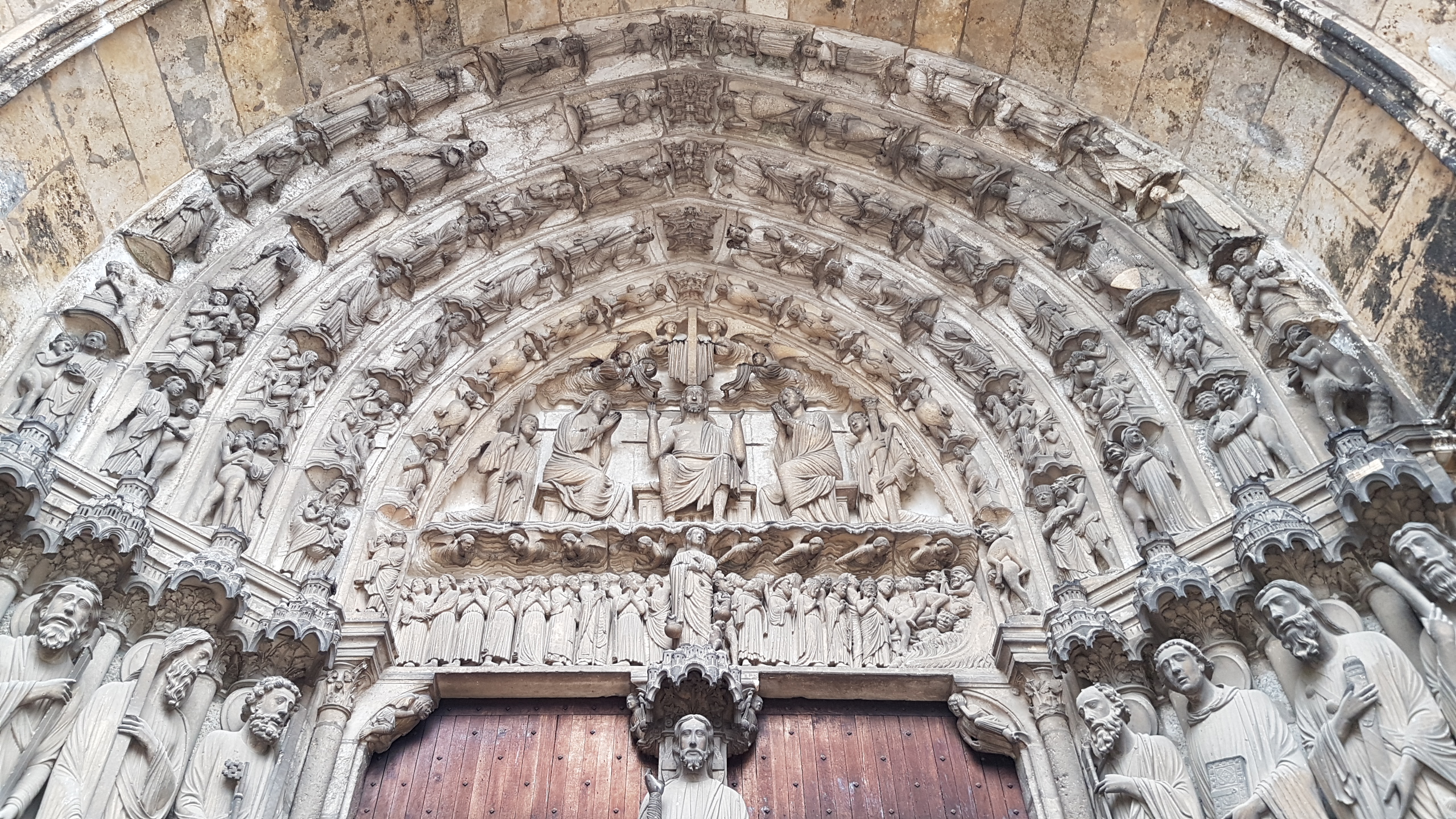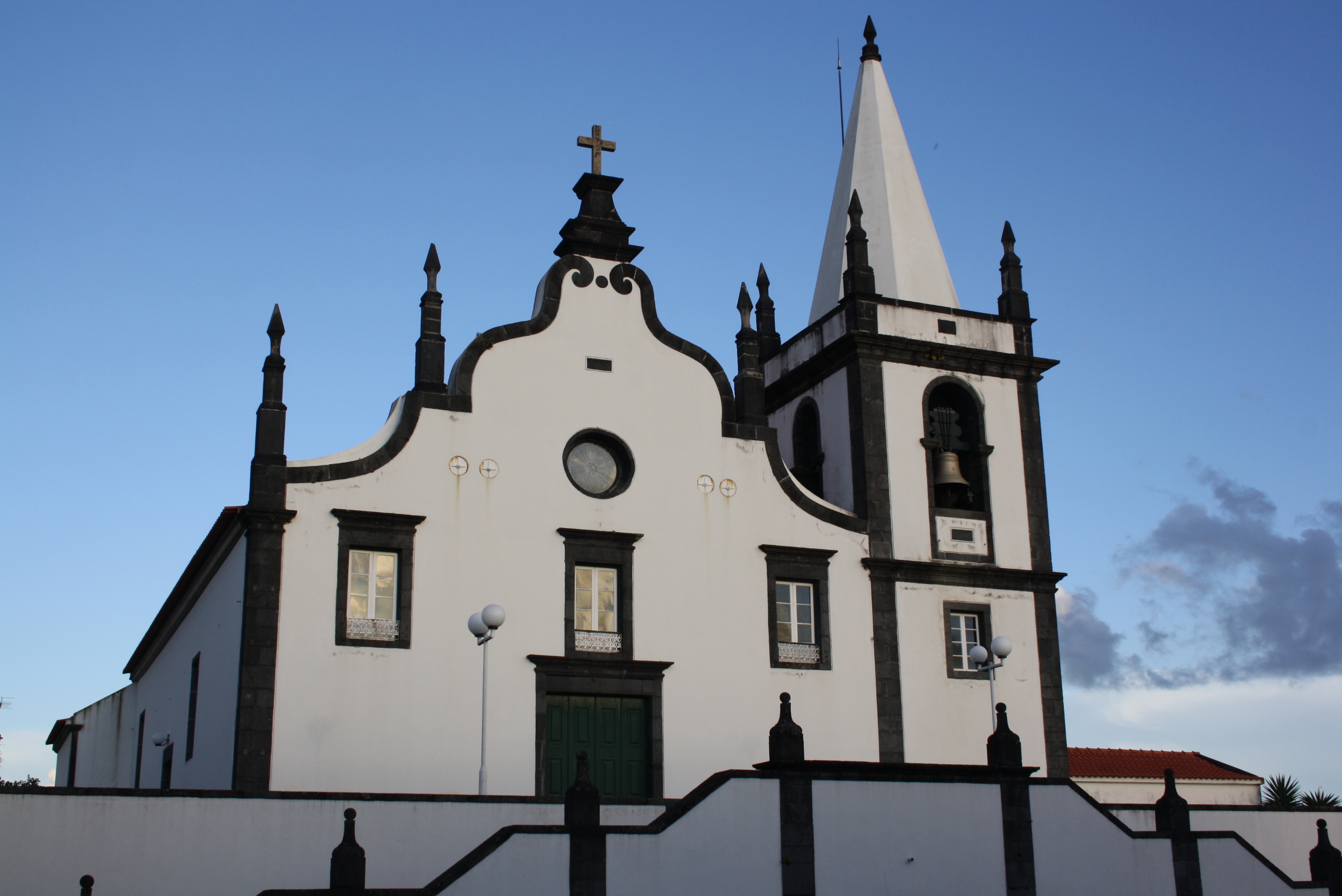|
Church Of Santa Bárbara (Horta)
The Church of Santa Bárbara ( pt, Igreja de Santa Catarina dos Cedros) is a church in the civil parish of Cedros, municipality of Horta, on the Portuguese island of Faial in the archipelago of the Azores. Its parish falls within the Roman Catholic Diocese of Angra, and serves the parishioners of the northern coast from the border with Salão to Ribeira Funda. History The first reference to the church dates to 1594, by Faialense historian Silveira Macedo, who referred to its construction. A lateral inscription over the south portico identifies the date that the lateral chapel was constructed as 1596. But writer Marcelino Lima suggested that its foundation may have been earlier, quoting Gaspar Frutuoso. During the third quarter of the 16th century, Gaspar Frutuoso writing in his epic chronicle ''"Saudades da Terra"'', described the church as a three nave temple, with five columns, one to the left of the entrance. On 20 November 1971, there was a large fire that destroyed the main ... [...More Info...] [...Related Items...] OR: [Wikipedia] [Google] [Baidu] |
Horta (Azores)
Horta () is a municipality and city in the Portuguese archipelago of the Azores encompassing the island of Faial. The population in 2011 was 15,038 in an area of The city of Horta itself has a population of about 7,000. Horta's marina is a primary stop for yachts crossing the Atlantic Ocean, and its walls and walkways are covered with paintings created by visitors noting the names of their vessels, crews, and the years they visited. Peter's Cafe Sport is a bar located across from the marina that houses the island's scrimshaw museum, a collection of artifacts carved from whale tooth and jawbone. Peter's is a point of reference for transatlantic yachters and sailors. History 15th through 17th centuries In 1467 the Flemish nobleman Josse van Huerter returned to Faial on a second expedition, this time disembarking along the shore of what would be known as Horta Bay. He built a small chapel which would later form the nucleus of a small community known as Horta, a name possibly deri ... [...More Info...] [...Related Items...] OR: [Wikipedia] [Google] [Baidu] |
Gaspar Frutuoso
Gaspar Frutuoso (c.1522 in Ponta Delgada – 1591 in Ribeira Grande) was a Portuguese priest, historian and humanist from the island of São Miguel, in the Portuguese archipelago of the Azores. His major contribution to Portuguese history was his detailed descriptions of the history and geography of the Azores, Madeira, Canary Islands and references to Cape Verde, which he published in his six-part tome ''Saudades da Terra'', as well as ''Saudades do Céu''. He is normally cited in settlement history of the islands of the Azores. Biography Gaspar Frutuoso was born in 1522,José Luís Brandão da Luz (1996), p. 475 on the island of São Miguel, son of Frutuoso Dias, a merchant and rural property-owner, and his wife Isabel Fernandes. Little is known of his childhood, apart from references to him working his father's lands during this period. The first trustworthy record about Frutuoso was his admission to the University of Salamanca (in 1548) where he later obtained an Arts certi ... [...More Info...] [...Related Items...] OR: [Wikipedia] [Google] [Baidu] |
Masonry
Masonry is the building of structures from individual units, which are often laid in and bound together by mortar; the term ''masonry'' can also refer to the units themselves. The common materials of masonry construction are bricks, building stone such as marble, granite, and limestone, cast stone, concrete blocks, glass blocks, and adobe. Masonry is generally a highly durable form of construction. However, the materials used, the quality of the mortar and workmanship, and the pattern in which the units are assembled can substantially affect the durability of the overall masonry construction. A person who constructs masonry is called a mason or bricklayer. These are both classified as construction trades. Applications Masonry is commonly used for walls and buildings. Brick and concrete block are the most common types of masonry in use in industrialized nations and may be either load-bearing or non-load-bearing. Concrete blocks, especially those with hollow cores, offer va ... [...More Info...] [...Related Items...] OR: [Wikipedia] [Google] [Baidu] |
Pinnacle
A pinnacle is an architectural element originally forming the cap or crown of a buttress or small turret, but afterwards used on parapets at the corners of towers and in many other situations. The pinnacle looks like a small spire. It was mainly used in Gothic architecture. The pinnacle had two purposes: # Ornamental – adding to the loftiness and verticity of the structure. They sometimes ended with statues, such as in Milan Cathedral. # Structural – the pinnacles were very heavy and often rectified with lead, in order to enable the flying buttresses to contain the stress of the structure vaults and roof. This was done by adding compressive stress (a result of the pinnacle weight) to the thrust vector and thus shifting it downwards rather than sideways. History The accounts of Jesus' temptations in Matthew's and Luke's gospels both suggest that the Second Temple in Jerusalem had one or more pinnacles ( gr, το πτερυγιον του ιερου): :Then he (Satan) br ... [...More Info...] [...Related Items...] OR: [Wikipedia] [Google] [Baidu] |
Archivolt
An archivolt (or voussure) is an ornamental moulding or band following the curve on the underside of an arch. It is composed of bands of ornamental mouldings (or other architectural elements) surrounding an arched opening, corresponding to the architrave in the case of a rectangular opening. The word is sometimes used to refer to the under-side or inner curve of the arch itself (more properly, the ''intrados''). Most commonly archivolts are found as a feature of the arches of church portals. The mouldings and sculptures on these archivolts are used to convey a theological story or depict religious figures and ideologies of the church in order to represent the gateway between the holy space of the church and the external world. The presence of archivolts on churches is seen throughout history, although their design, both architecturally and artistically, is heavily influenced by the period they were built in and the churches they were designed for. Etymology The word originat ... [...More Info...] [...Related Items...] OR: [Wikipedia] [Google] [Baidu] |
Roman Arch
Roman Arch who was an Australian bred racehorse that was foaled in 1998. (Another Roman Arch was foaled in 1995 in New Zealand.) Roman Arch was most famous for winning the 2006 Australian Cup at the odds of 60/1 with the TAB. His other group 1 win was the 2003 Toorak Handicap ridden by Luke Currie where he beat subsequent Cox Plate winner, Fields of Omagh. Roman Arch also won the 2005 Werribee Cup and 2005 Sandown Classic The Zipping Classic, is a Melbourne Racing Club Group 2 Thoroughbred horse race held under weight for age conditions over a distance of 2400 metres run at Sandown Racecourse, Melbourne, Australia in mid November. Prize money is A$750,000. Hi .... External links Roman Arch's racing record 1998 racehorse births Thoroughbred family 2-e Racehorses bred in Australia Racehorses trained in Australia {{racehorse-stub ... [...More Info...] [...Related Items...] OR: [Wikipedia] [Google] [Baidu] |
Igreja De Santa Bárbara (cedros), Azelejos E Pia De Batismo, Cedros, Concelho Da Horta, Ilha Do Faial, Portugal
"Igreja" ("Church") is a single by Brazilian rock band Titãs, released in 1986, part of their '' Cabeça Dinossauro'' album. Lyrics and composition According to songwriter and then bassist and vocalist Nando Reis, the song was written on the acoustic guitar at his mother's house in the district of Butantã, São Paulo: By the time of the album's release, Reis said: Reception within the band It was one of the last songs to be selected for the album and it stirred controversy among the members themselves - vocalist Arnaldo Antunes, at first, didn't want to record it and would even leave the stage sometimes when the song was performed live. When the members had a meeting at vocalist Branco Mello's apartment to discuss the album's repertoire, vocalist, bassist and saxophonist Paulo Miklos also opposed the song's inclusion, but soon changed his mind as the band performed it live. Antunes, on the other hand, said "the song is against the Church as the institution, but ... [...More Info...] [...Related Items...] OR: [Wikipedia] [Google] [Baidu] |
Igreja De Santa Bárbara (cedros), Nave, Cedros, Concelho Da Horta, Ilha Do Faial, Portugal
"Igreja" ("Church") is a single by Brazilian rock band Titãs, released in 1986, part of their '' Cabeça Dinossauro'' album. Lyrics and composition According to songwriter and then bassist and vocalist Nando Reis, the song was written on the acoustic guitar at his mother's house in the district of Butantã, São Paulo: By the time of the album's release, Reis said: Reception within the band It was one of the last songs to be selected for the album and it stirred controversy among the members themselves - vocalist Arnaldo Antunes, at first, didn't want to record it and would even leave the stage sometimes when the song was performed live. When the members had a meeting at vocalist Branco Mello's apartment to discuss the album's repertoire, vocalist, bassist and saxophonist Paulo Miklos also opposed the song's inclusion, but soon changed his mind as the band performed it live. Antunes, on the other hand, said "the song is against the Church as the institution, but ... [...More Info...] [...Related Items...] OR: [Wikipedia] [Google] [Baidu] |
Castelo Branco (Horta)
Castelo Branco is the southern ''freguesia'' ("civil parish") on the island Faial, in the Azores; part of the municipality of Horta. This agricultural community is primarily known for the location of the Central Group's first airport, Horta Airport. The population in 2011 was 1,309, in an area of 23.91 km². It contains the localities Canada da Santa Catarina, Cancela, Cerrado Grande, Farrobim do Norte, Grota do Meio, Jogo, Lombega, Pedreiras, Ribeira Grande and Ribeirinha. History The first record of the region referred to its old church, dated 30 July 1568; the church became integrated into the diocese in 1643. On 10 July 1514, on the orders of King Manuel I the appropriate religious equipment was installed at this primitive church, which was then composed of three naves, and built over 5 columns. Father Gaspar Frutuoso would later note that the church was one of a succession of churches to be formally built in each of the parishes on the island (following those of Hor ... [...More Info...] [...Related Items...] OR: [Wikipedia] [Google] [Baidu] |
São Roque Do Pico (Azores)
São Roque do Pico () is a municipality in the Portuguese archipelago of the Azores, occupying most of the northern side of the island of Pico. As of 2021, it has 3,221 inhabitants spread through five freguesias (civil parishes) in an area of 142.36 km². The municipality is bordered by the Atlantic to the north, Lajes do Pico to the south and east, and Madalena to the west. History While the first incursions into the island occurred in the 15th century, the region that would become known as São Roque occurred later.Sandra Cristina Sousa (14 May 2003), p.18 The first colonizers of Pico came to occupy the area of Lajes, coming from the lands of the north of Portugal, because there were few anchorages in other parts of the island. What occurred in the north was starkly different: these colonizers were families from Graciosa, who would much later be supplemented by Flemings from Faial, under the orders of Josse van Huerter. At this time São Roque was a peripheral jurisdicti ... [...More Info...] [...Related Items...] OR: [Wikipedia] [Google] [Baidu] |
Prainha (São Roque Do Pico)
Prainha is a civil parish in the municipality of São Roque do Pico on the island of Pico, in the Portuguese archipelago of the Azores. It has 530 inhabitants in an area of 26.10 km². History “Prainha” was the second settlement to be formed on the north coast of Pico Island, whose settlement began with natives from Northern Portugal, after stopping at Terceira and Graciosa. According to Gaspar Frutuoso, in ''Saudades da Terra'', this village already existed in 1522, as well as its parish church. The oldest known record of this temple dates from 1599, although the administrative and ecclesiastical institution of Prainha came much earlier. In 1572, an enormous volcanic eruption took place on a peak near the Caiado Lake, next to the parish. The extraordinary torrent of lava reached the sea and formed a great “ mistério” (Azorean expression to designate a terrain of spongy lava, covered with moss and herbs), known as ''Prainha'' (Portuguese for "little beach"). This ''mi ... [...More Info...] [...Related Items...] OR: [Wikipedia] [Google] [Baidu] |
Nave
The nave () is the central part of a church, stretching from the (normally western) main entrance or rear wall, to the transepts, or in a church without transepts, to the chancel. When a church contains side aisles, as in a basilica-type building, the strict definition of the term "nave" is restricted to the central aisle. In a broader, more colloquial sense, the nave includes all areas available for the lay worshippers, including the side-aisles and transepts.Cram, Ralph Adams Nave The Catholic Encyclopedia. Vol. 10. New York: Robert Appleton Company, 1911. Accessed 13 July 2018 Either way, the nave is distinct from the area reserved for the choir and clergy. Description The nave extends from the entry—which may have a separate vestibule (the narthex)—to the chancel and may be flanked by lower side-aisles separated from the nave by an arcade. If the aisles are high and of a width comparable to the central nave, the structure is sometimes said to have three naves. ... [...More Info...] [...Related Items...] OR: [Wikipedia] [Google] [Baidu] |




